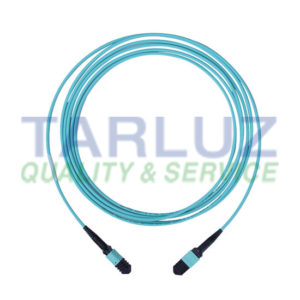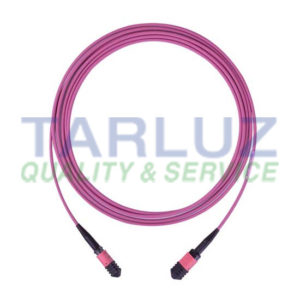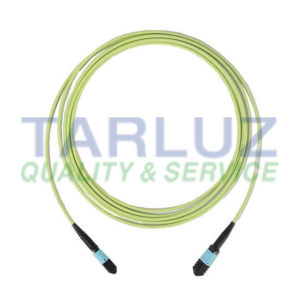Multimode fiber falls into different categories based on grade, including OM1, OM2, OM3, OM4 and OM5. Your choice of multimode fiber may depend on current standards as well as multiple other factors, including IP traffic; switching, routing, virtualization and data center connections; higher bandwidth applications; video-on-demand; convergence; and more.
Fiber-Optic Cable Uses: OM1 and OM2
OM1 specifies 62.5-micron cable and OM2 specifies 50-micron fiber. These are commonly used in-premise applications, supporting Ethernet rates of 10 Mbps to 1 Gbps. They are also typically used with LED transmitters. OM1 and OM2 cables are not suitable for today’s higher-speed networks.
Fiber-Optic Cable Uses: OM3, OM4 and OM5
The 50-micron fiber, particularly OM5 and laser-optimized OM3 fiber and OM4 fiber, provides longer link lengths and/or higher speeds, such as 10, 40 and 100 Gbps. These are recommended for premise applications (backbone, horizontal and intra-building links) and should be considered for new installations. OM3, OM4 and OM5 can also be used with LEDs and laser light sources.
OM3 fiber and OM4 fiber are 50-micron laser-optimized multimode fiber (LOMMF). Both are  designed for use with 850-nm vertical-cavity surface-emitting lasers (VCSELS) and have aqua sheaths. OM5 is a 50-micron fiber known as wideband multimode fiber (WBMMF) that is used with 850- to 950-nm VCSELS. OM5 supports emerging shortwave wavelength division multiplexing (SWDM) applications with two-fiber connectivity and is not widely available.
designed for use with 850-nm vertical-cavity surface-emitting lasers (VCSELS) and have aqua sheaths. OM5 is a 50-micron fiber known as wideband multimode fiber (WBMMF) that is used with 850- to 950-nm VCSELS. OM5 supports emerging shortwave wavelength division multiplexing (SWDM) applications with two-fiber connectivity and is not widely available.
Fiber Bandwidth
OM3 fiber specifies an 850-nm laser-optimized 50-micron fiber with an effective modal bandwidth (EMB) of 2000 MHz/km. It can support 100-Gbps link distances up to 100 meters. OM4 fiber and OM5 specify a high-bandwidth 850-nm laser-optimized 50-micron fiber with an effective modal bandwidth of 4700 MHz/km. OM4 and OM5 can support 100-Gbps link distances of 150 meters. All three rival single-mode fiber in performance while being significantly less expensive to implement.
How Are Fiber-Optic Cables Made?
OM1 and OM2 are made with a different process than OM3 fiber and OM4 fiber. Non-laser-optimized fiber cable is made with a small defect in the core, called an index depression. LED light sources are commonly used with these cables. OM3 fiber and OM4 fiber are manufactured without the center defect.
As networks migrated to higher speeds, VCSELS became more commonly used than LEDs, which have a maximum modulation rate of 622 Mbps. Because of that, LEDs can’t be turned on and off fast enough to support higher-speed applications. VCSELS provided the required speed, but unfortunately, when used with older OM1 and OM2 cables, required mode-conditioning launch cables. Thus, manufacturers changed the production process to eliminate the center defect and enable OM3 and OM4 fiber to be used directly with the VCSELS.
